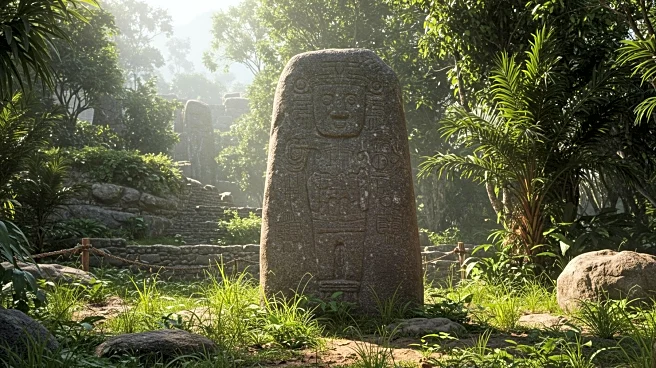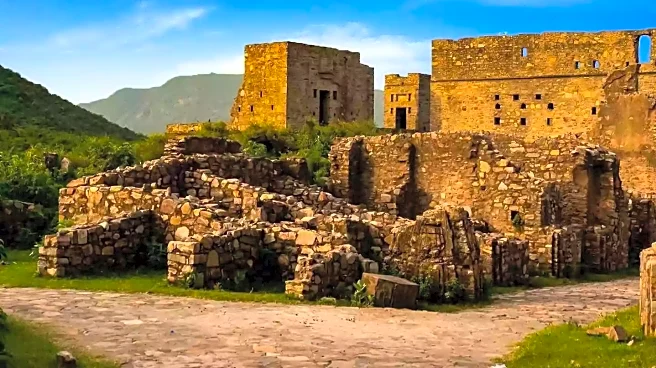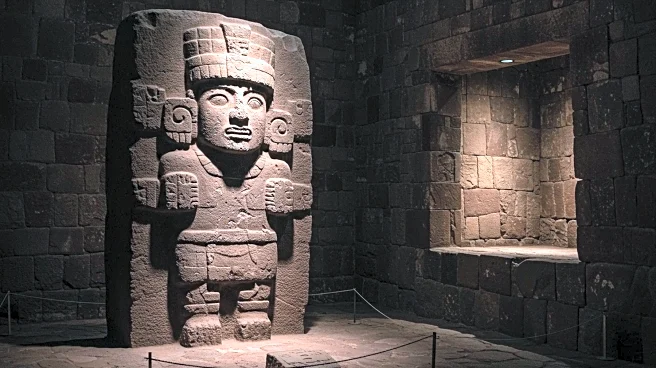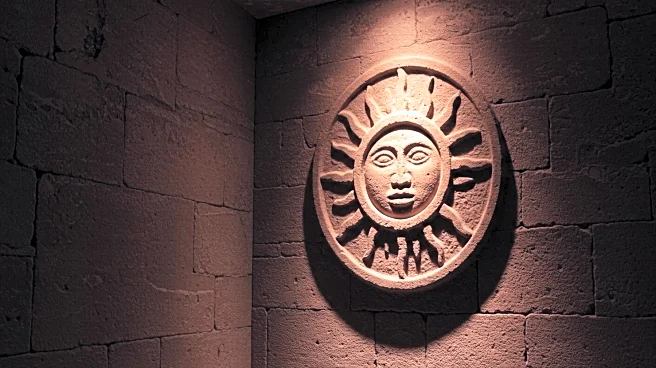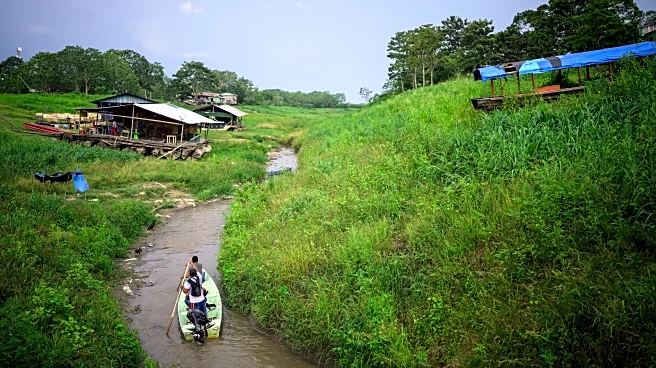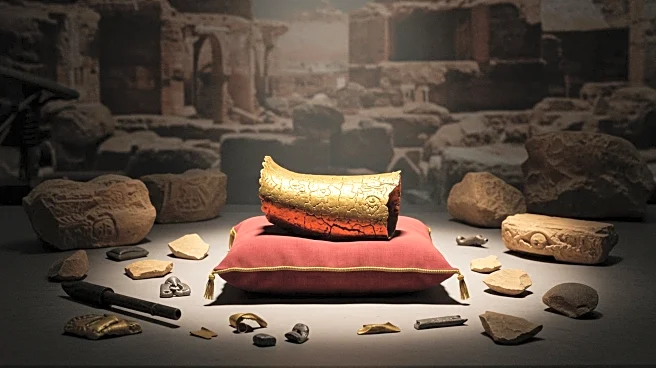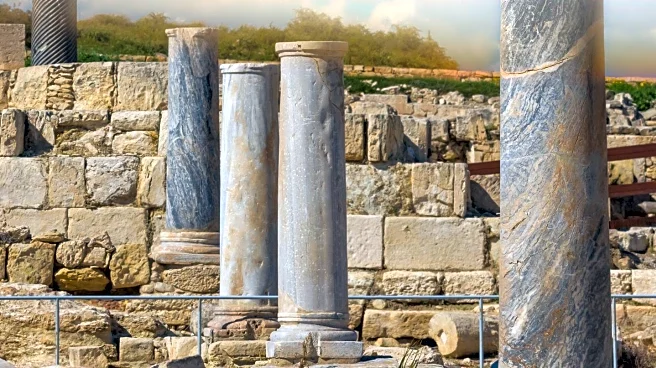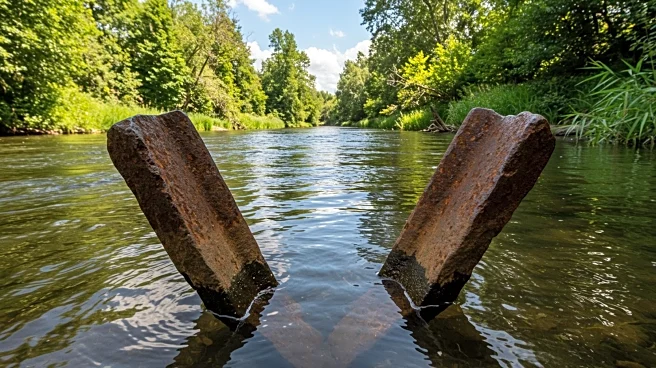What is the story about?
What's Happening?
Archaeologists have uncovered the ruins of an ancient temple belonging to the Tiwanaku civilization in Bolivia's Caracollo municipality. This discovery, located southeast of Lake Titicaca, is significant as it lies outside the previously known boundaries of Tiwanaku expansion. The temple, named Palaspata, features architectural elements typical of Tiwanaku style, such as a terraced platform and sunken courtyard. The site is strategically positioned near historical trade routes, suggesting its role in expanding Tiwanaku's influence. Researchers found keru cups, indicating the temple's use for large gatherings. The study, led by Dr. José Capriles from Pennsylvania State University, highlights the temple's potential as a gateway for Tiwanaku's sociopolitical influence.
Why It's Important?
The discovery of the Palaspata temple provides valuable insights into the Tiwanaku civilization, which predates the Inca Empire. Understanding the temple's role in trade and religious practices can shed light on the social and political dynamics of the Tiwanaku society. This find challenges previous assumptions about the extent of Tiwanaku's territorial reach and offers a new perspective on their cultural and economic interactions. The research contributes to the broader understanding of pre-Columbian civilizations in South America, highlighting the complexity and sophistication of societies that existed before European contact.
What's Next?
Further archaeological investigations are expected to explore the temple's significance and its connections to other Tiwanaku sites. Researchers may conduct more detailed studies to understand the temple's construction techniques and its role in Tiwanaku's expansion strategy. The findings could lead to a reevaluation of Tiwanaku's influence in the region and prompt new explorations in areas previously overlooked by archaeologists.
Beyond the Headlines
The discovery raises questions about the Tiwanaku civilization's adaptability and resilience in the face of environmental challenges. The temple's strategic location suggests a sophisticated understanding of geography and trade, which may have contributed to Tiwanaku's longevity. The find also underscores the importance of interdisciplinary approaches in archaeology, combining historical, cultural, and environmental studies to reconstruct ancient societies.
AI Generated Content
Do you find this article useful?
